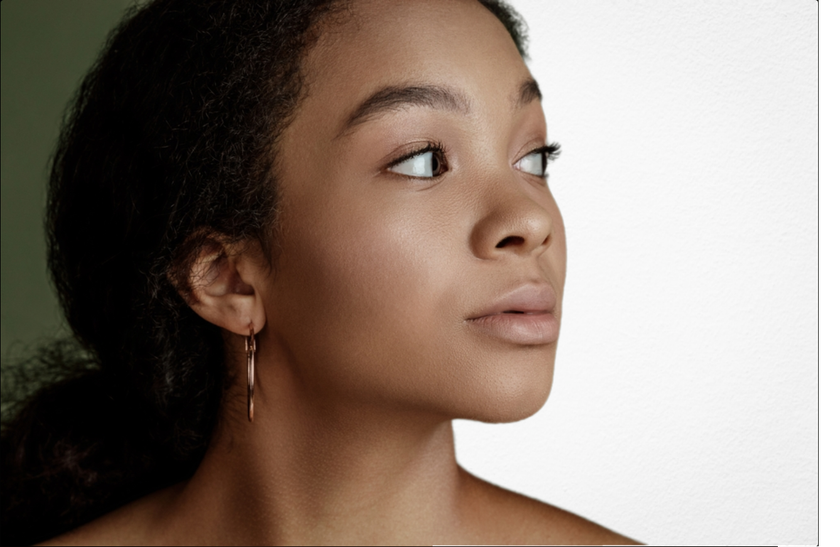April 23
9 min. to read
How To Change Photo Background To White To Make Your Photos Pop
 Do you want your photos to look sharp and professional? A white backdrop can make your subject stand out, free from distractions, and framed by simplicity. This post guides you through several techniques on how to make a white background on a photo. You'll learn basic manual edits and discover how advanced tools such as Luminar Neo can simplify the process.
Do you want your photos to look sharp and professional? A white backdrop can make your subject stand out, free from distractions, and framed by simplicity. This post guides you through several techniques on how to make a white background on a photo. You'll learn basic manual edits and discover how advanced tools such as Luminar Neo can simplify the process.
Why Choose a White Background
A white background enhances photos in several ways:
Makes the Subject Stand Out: Changing the setting to white ensures your subject remains the focal point. This approach highlights everything from colorful flowers to sleek gadgets without competition from the backdrop.
Reduces Distractions: Busy or vivid backgrounds can overshadow your subject, making your photo look chaotic. A white backdrop removes these distractions, presenting a clean and clear view.
Provides a Uniform Look: For those creating product listings or professional portfolios, consistency matters. White backgrounds offer a consistent look that conveys professionalism and keeps the focus on your products or portraits.
Considering these benefits, learning how to change the background to white is a valuable skill that can significantly improve your photographic results!
Advanced yet easy-to-use photo editor
Get Luminar Neo NowUsing Advanced AI Tools: Luminar Neo
For those looking to streamline the process of background editing, Luminar Neo offers an advanced, AI-driven solution. This platform simplifies complex tasks such as changing or removing settings with just a few clicks, leveraging AI to detect and isolate subjects automatically!
Luminar Neo excels in automatically detecting and replacing backgrounds, thanks to its powerful AI algorithms! This capability makes it an ideal choice for both beginners and seasoned photographers!
How to Change the Background to White with Luminar Neo
Step 1: Initial Setup
Open Luminar Neo and select your image. Navigate to the 'Edit' tab to start.
Step 2: Remove the Background
Go to the 'Masking' tab under 'Layers Properties' and choose the 'Background Removal AI.'
Click 'Remove' to eliminate the existing backdrop, revealing a transparent checkerboard pattern that indicates a successful removal.
Step 3: Refine the Edges
After removing the setting, some edges around the subject may need fine-tuning. Use the Refinement Brush to smooth out these areas, ensuring a clean cutout.
Step 4: Add a White Background
With the background removed, add a new layer and select a white color fill.
Move this layer to the bottom in the Layers palette to set the white background behind your subject.
Step 5: Adjust Background and Subject Separately
If needed, adjust the exposure and contrast of the background layer to ensure the white appears vibrant and even.
Luminar Neo not only allows you to add a white setting but also provides tools to get rid of a white background if you're aiming for transparency or a different-colored backdrop. This flexibility is perfect for creating collages, composite images, or preparing photos for various design projects!
Transform Your Images with an AI Background Changer
Try on my photo!Basic Techniques for Changing Backgrounds
Changing photo backdrops to white can dramatically improve the focus and appeal of your images. Here are some basic techniques using popular white background adder tools like Photoshop and Lightroom!
Photoshop Techniques
Step 1: Select the Whites Using The Color Range
Open Photoshop and go to Select > Color Range.
Use the eyedropper tool to click on the white areas of the photo.
Adjust the fuzziness slider to fine-tune the selection of the white areas.
Step 2: Refine the Selection
Use the Quick Selection and Lasso tools to correct any areas that are not properly selected.
Step 3: Adjust the Saturation
Add a Hue/Saturation adjustment layer from the Layers panel.
Choose whites from the dropdown in the Hue/Saturation dialog and reduce the saturation.
Step 4: Adjust the Levels
Add a Levels adjustment layer and clip it to your selection layer by holding down the Alt key and clicking between the two layers in the Layers panel.
Adjust the levels to make the background perfectly white.
Step 5: Adjust Brightness and Contrast
Create a new layer for Brightness and Contrast adjustments.
Increase the brightness to enhance the whites and use a gradient on a layer mask to blend the adjustments seamlessly.
Lightroom Techniques
Step 1: Update Your Lightroom
Make sure your version of Lightroom is updated to access the latest tools and features.
Step 2: Use the Masking Tool
Select the masking tool from the toolbar to outline your subject accurately.
Step 3: Adjust Exposure, Shadows, and Highlights
Slightly increase the exposure.
Adjust the shadows up and highlights down to enhance the background without affecting the subject.
Step 4: Invert the Mask and Increase the Exposure
Add another mask, select the Subject again, and invert the mask.
Increase the exposure to turn the background white.
Step 5: Final Adjustments on Shadows and Highlights
Adjust the shadows and highlights until satisfied.
Use the brush tool to remove any unwanted parts of the mask, adjusting the density and flow for precision.
These methods in Photoshop and Lightroom offer control over how to white out the background of a photo, providing flexibility depending on the complexity of the backdrop and the detail needed in the subject!
Conclusion
We've covered a lot in our journey to mastering the art of changing photo backgrounds to white, from basic techniques in Photoshop and Lightroom to advanced methods using Luminar Neo. Whether you prefer manual tools or the latest AI-driven software, the ability to switch up your photo's backdrop opens up a realm of creative possibilities!
By now, you should feel equipped to make your photos stand out with crisp, white backgrounds or even explore other color options that enhance your subject. Remember, a simple setting change can turn an ordinary photo into a striking piece of art.
For those eager to delve deeper into the world of photo editing, revisit our previous posts for more insights and tips, such as our detailed look at the best free app to change a picture background. Each tool and technique offers unique advantages, whether you're preparing product shots for e-commerce, crafting professional portraits, or just enhancing your personal photos for social media.




 >
>

